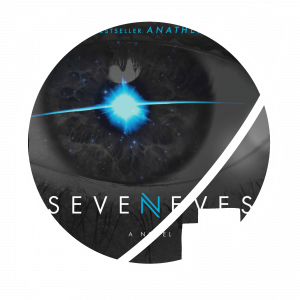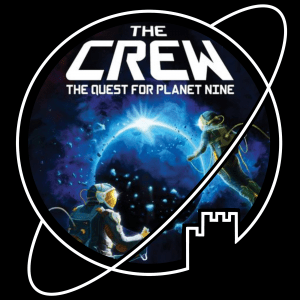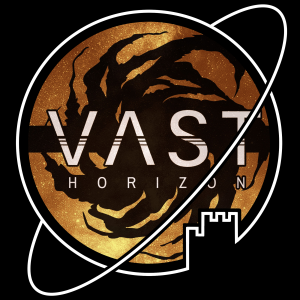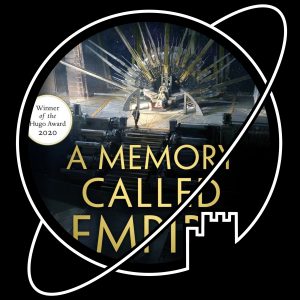- Board game designed by Jacob Fryxelius
- Artwork by Isaac Fryxelius
- Published by FryxGames
- Released in 2016
- 1-5 players
- Playing time: 120 minutes
In the 2400s, mankind begins to terraform the planet Mars. Giant corporations try to profit by having the largest share in its development. The temperature and the oxygen level are raised, and the ocean coverage is upped until the environment is habitable. In this 2-3 hour strategic board game, players play as one of the corporations and get victory points for their contribution to the terraforming and for advancing human infrastructure throughout the solar system.


This has been my favourite game for the last two years. The first time I played it, I wasn’t too impressed. Good game, but nothing extra special. Then I got it for my birthday, played it and kept playing it.
Generally, I love the more complex strategic board games and I prefer playing with 3-5 players. Games like Gaia Project are amazing, because every part of the game has influence on another part. You need to plan for the long term, be flexible on the short term, and fail anyhow, while you never have enough of any of the resources. However, in reality I mostly play games together with my wife. She also loves board games, but generally not too complex or too long. She likes the more abstract two player games, but I often don’t feel like those 1-on-1 brain crunchers. I would rather develop my empire and collect points eurogame style. Enter Terraforming Mars, a game we both endlessly enjoy. Why? I think because it combines long-term strategy, short-term opportunism and building up your own empire.
Every round, every player gets their income consisting of money and resources. The height of the income is determined by the production values on the individual player mats, which can be developed during the game. Players get four cards that they can choose to buy or discard, and then starts the main action phase of each round. Here, players can do a couple of different actions, but mainly play cards to increase their production, get victory points or place new forests, cities or factories on the board. As the game progresses, players get more powerful and generally focus their efforts on one of the many ways to score victory points.
What I also love about this game is its attention to thematic detail. Designer Jacob Fryxelius has a PhD in chemistry and has tried to make the game as realistic as possible. The parameters that determine the end of the game actually are the scientific parameters for a habitable planet. The map of Mars with its volcanoes and craters where oceans could exist are geographically correct. The cards all represent technology that could exist and actually more or less cause the effects the cards do, accompanied by some nice flavour texts.
Finally, I want to compliment the design of the pictograms that make the game almost language independent. The only problems are that I do not have enough space when production is high (you can’t go further than 19 on the player mats) and that the term ‘resource’ is used for every kind of thing you can collect, whether it is an animal or an electricity token. Every resource is represented by a cube, I think to allow the cards to span a broad thematic range. It is very efficient game design, but a little confusing for new players.
In short: awesome game, always playing this when I have the chance.
Some elaboration on the expansions Prelude, Colonies and Hellas & Elysium
I like to play with the expansion Prelude, which gives you a little boost at the start of the game. It speeds up the slow start when players do not yet have much of a production going and gives some direction for your long-term strategy. For example, you get a +1 production of titanium, so that (1) you already have some extra income and (2) you will focus on cards that can be bought with titanium. The Prelude-cards do cause some unbalance in the starting position of players now and then, but not so much that I mind. This expansion also includes some new cards for in your standard deck.
Sometimes I combine Prelude with the expansion Colonies. Colonies gives a couple of external places to gain resources for the player who ‘flies over’ there. It is nice to change up the play, but the general opinion of the people I have played this with is: ‘It does not bother me‘. Make of that what you wish. This expansion also includes new cards that often have something to do with the colonies and two new corporations.
I do really like the expansion Hellas & Elysium, which gives you two new maps to play on from other sides of Mars, accompanied by their own milestones (first player to get this gets points) and awards (player who has most of this at the end of the game gets points). These maps have really helped to keep our experience fresh.
Not really an expansion, but worth a mention is the draft-variant. I like to do it at the start when you get 10 random cards to choose your starting hand. When you draft you pick one and slide the rest to the player to your right. You get a new hand of 9 from the player to your left, pick one, and give 8 to the next player. So you continue until all cards are dealt. This balances each players hand.
You can also do this every round when cards are dealt, but that is too much for me. It slows the game down considerably and pushes you to play ‘negatively’: you choose cards to prevent another player from having them instead of cards you want yourself. That defeats the charm of the game a bit for me.

I’m a board game fan, but when it comes down to it, I play surprisingly few board games – most of my time is eaten up by other hobbies. Whenever I do play, however, there is probably an upwards of 80% chance Key is also at the table.
As such it is no surprise that I have played his favourite game, Terraforming Mars, quite a few times by now.
Admittedly, as a player of wargames and table top roleplaying games I am so used to rulebooks over an inch thick that I am probably not the best person to evaluate whether a board game is complex and whether it is easy to get into. But I think Terraforming Mars has found a great balance between complexity and replayability on the one hand, and storytelling and theme on the other.
I think it would take most people at least one game to get used to the mechanics, but even if your chances of winning are probably going to be poor, the game will still be fun: the ‘base building’ aspect of it is very satisfying. The theme really helps here as well – it is just a lot of fun to imagine smashing asteroids into the surface, and to see the terraforming project grow from some microbes on the ice to – eventually – the first zoo on Mars.
By the second game, I think most people will get the hang of it, trying to find synergies between their cards, building up resources and claiming surface area rapidly. From there, not even the sky is the limit. Because of the game’s tall stack of cards drawn at random, which determine the projects/inventions you get to build, no two games play the same. Yes, this random element can screw you some times, but generally speaking, enough cards pass through your hand to mitigate that chance.
This is even more so when including a couple of the expansion sets, which help the game get off to a more rapid start and give you direction right from the get go – addressing probably the most important issues to repeat players.
Finally, I love the ‘hard’ sci-fi aspects of the game. Isaac Fryxelius has clearly given some thought to the actual mechanics of terraforming a planet (and had a close look at Kim Stanley Robinson’s homework on Red Mars). As a result, it even feels like playing the game gives some insight into what such a huge undertaking as a terraforming project could look like – science fiction at its best!














